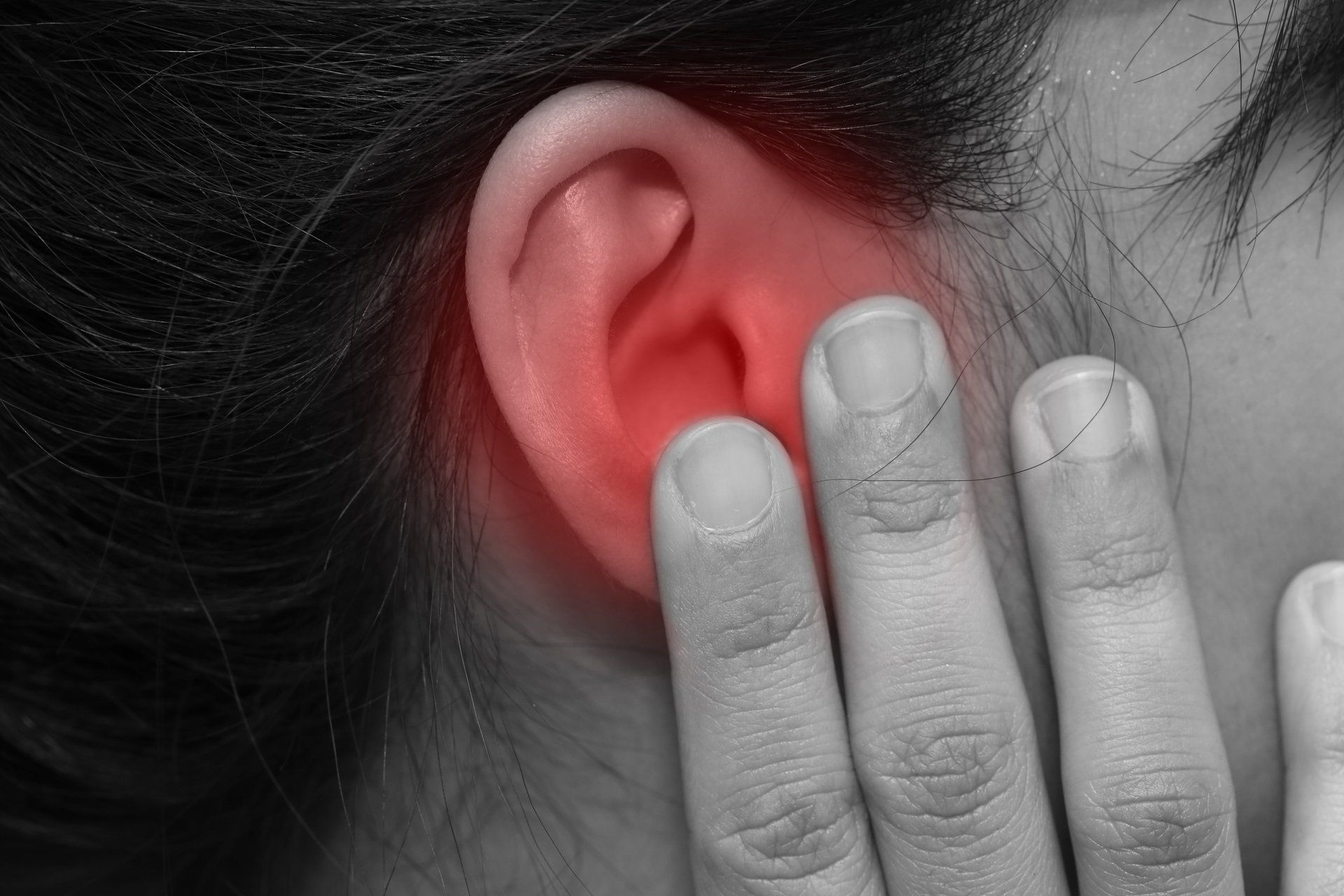BLOG

Strep throat is the leading bacterial cause of a sore throat. However, there are other more common causes of a sore throat including: viruses, allergens, post-nasal drip, environmental irritants and other types of bacteria. While it can be tricky, TelaConsult can help you determine the source of your sore throat. This is important because most sore throats don’t need antibiotics, yet for strep throat antibiotics are an effective treatment. An appropriate antibiotic can relieve symptoms of strep throat, reduce the length of illness, prevent serious complications, and prevent the spread to family and friends.
Strep throat can be diagnosed with a throat culture or strep swab, but sometimes the diagnosis is made if certain symptoms are present or absent. Most typical symptoms include sudden onset of sore throat, fever, headache, stomach ache and nausea. Often the lymph nodes around the neck will be swollen and tender and the tonsils can become red, swollen and have pus pockets. Notable absent symptoms usually include a cough, runny nose, red eyes, and hoarseness. However, in my experience a slight cough can be present with strep throat due to the scratchy sensation in back of the throat.
Symptoms usually develop two to five days after exposure to strep from an infected person’s cough or sneeze. It is also possible to be exposed from sharing a plate, cup or utensil with someone infected. Uncomplicated strep throat usually lasts three to five days and usually gets better without treatment.
The goal of antibiotic therapy is to relieve symptoms, prevent spread, prevent serious complications, and decrease the duration of the illness. Other treatments focus on controlling fever and pain with ibuprofen and tylenol while staying hydrated with plenty of appropriate fluids. Of course the best treatment is prevention. Wash your hands frequently, avoid touching your face, and don’t share tableware.
You should start feeling better a day or two after starting antibiotics. When you have no fever and have been on antibiotics for 24 hours you aren’t as contagious and can return to work or school. Seek care if you are worried about your illness, your symptoms are worsening, or you fail to improve after a couple days of antibiotics. You should seek immediate medical attention if you have trouble swallowing, shortness of breath, confusion, or severe pain. Life threatening complications can occur and prompt treatment is important.
If you have any questions or concerns about whether you may have strep throat or need testing, treatment, or antibiotics, consult with TelaConsult today! We will be happy to help and advise you on the level of care you need and if appropriate we will send you a prescription for antibiotics.
David Schaefer, M.D.
Resources
“CDC Features.” Centers for Disease Control and Prevention, Centers for Disease Control and Prevention, 31 Jan. 2018, www.cdc.gov/Features/StrepThroat/.
“Disease of the Week.” Centers for Disease Control and Prevention, Centers for Disease Control and Prevention, 11 Jan. 2018, www.cdc.gov/dotw/strepthroat/index.html.
“Pharyngitis (Strep Throat).” Centers for Disease Control and Prevention, Centers for Disease Control and Prevention, 16 Sept. 2016, www.cdc.gov/groupastrep/diseases-hcp/strep-throat.html.
Pichichero, Michael. “Treatment and Prevention of Streptococcal Pharyngitis.” UpToDate, 10 Apr. 2018, www.uptodate.com.
Schmitt, Barton. “Strep Throat Infection.” Pediatric Advisor: Strep Throat Infection, 23 Nov. 2009, www.abcdpediatrics.com/advisor/pa/pa_strepthr_hhg.htm.
Ward, Ellen. “Group A Streptococcal Tonsillopharyngitis in Children and Adolescents: Clinical Features and Diagnosis.” UpToDate, 17 Jan. 2018, www.uptodate.com.

Why TelaConsult:
TelaConsult was developed to bridge the gap between great health and great time constraints – because we know dedicated care means working with a patient, not against them.
In a recent survey done by the Health Informational National Trends Survey, nearly 16% of Americans reported time constraints as the most significant reason why they did not schedule regular checkups. In addition to this, Gallup recently reported 41% of U.S. adults say they lack the time to do what they want, and 44% frequently feel stressed. Combine those statistics with every parent’s nightmare of taking their healthy child to a doctor’s office filled with sick children, or worse, dragging a sick child out to see a doctor, and it’s a wonder anyone ever makes an appointment at all!
We are available weekends and all hours of the day for patients who need to talk with a doctor on their own time. Our services erase the guilt and added stress every parent dreads when deciding whether or not to call the pediatrician after hours. It offers a sense of relief when a you or a loved one cannot sleep through the night due to a non-life threatening illnesses, as well as removes some of the financial stress of deciding if a consult is worth the co-pay. Busy professionals, parents, and any all people dealing with any illness have enough on their plate already. Finally, we have developed a path to wellness that doesn’t add more hurdles to your journey to good health.Just imagine, no more Sunday nights spent stressed deciding to call in sick, or wait until after a Monday afternoon doctor appointment. No more having to miss work to have a quick and simple medical question answered. No more wasted afternoons waiting hours for your turn to see the doctor. There really is an app (hyperlink) for that! Have your questions answered immediately, so you can stop worrying about every little thing, or get confirmation something is a big thing. Stop putting off your wellness because you don’t know where to start or can’t find the time.
We are also committed to proactive prevention, and work hard to supply all our patients with tools to remain healthy – both mentally and physically. We are fully HIPPA compliant and capable to partner seamlessly with your current primary care provider, or connect you with one in your area when you are ready for follow-up care.
Download our app today to see the difference our team of general practice doctors, nurse practitioners, and family physicians can make to keep you going in your busy life and stay connected to wellness.
Strep throat is the leading bacterial cause of a sore throat. However, there are other more common causes of a sore throat including: viruses, allergens, post-nasal drip, environmental irritants and other types of bacteria. While it can be tricky, TelaConsult can help you determine the source of your sore throat. This is important because most sore throats don’t need antibiotics, yet for strep throat antibiotics are an effective treatment. An appropriate antibiotic can relieve symptoms of strep throat, reduce the length of illness, prevent serious complications, and prevent the spread to family and friends.
Strep throat can be diagnosed with a throat culture or strep swab, but sometimes the diagnosis is made if certain symptoms are present or absent. Most typical symptoms include sudden onset of sore throat, fever, headache, stomach ache and nausea. Often the lymph nodes around the neck will be swollen and tender and the tonsils can become red, swollen and have pus pockets. Notable absent symptoms usually include a cough, runny nose, red eyes, and hoarseness. However, in my experience a slight cough can be present with strep throat due to the scratchy sensation in back of the throat.
Symptoms usually develop two to five days after exposure to strep from an infected person’s cough or sneeze. It is also possible to be exposed from sharing a plate, cup or utensil with someone infected. Uncomplicated strep throat usually lasts three to five days and usually gets better without treatment.
The goal of antibiotic therapy is to relieve symptoms, prevent spread, prevent serious complications, and decrease the duration of the illness. Other treatments focus on controlling fever and pain with ibuprofen and tylenol while staying hydrated with plenty of appropriate fluids. Of course the best treatment is prevention. Wash your hands frequently, avoid touching your face, and don’t share tableware.
You should start feeling better a day or two after starting antibiotics. When you have no fever and have been on antibiotics for 24 hours you aren’t as contagious and can return to work or school. Seek care if you are worried about your illness, your symptoms are worsening, or you fail to improve after a couple days of antibiotics. You should seek immediate medical attention if you have trouble swallowing, shortness of breath, confusion, or severe pain. Life threatening complications can occur and prompt treatment is important.
If you have any questions or concerns about whether you may have strep throat or need testing, treatment, or antibiotics, consult with TelaConsult today! We will be happy to help and advise you on the level of care you need and if appropriate we will send you a prescription for antibiotics.
David Schaefer, M.D.
Resources
“CDC Features.” Centers for Disease Control and Prevention, Centers for Disease Control and Prevention, 31 Jan. 2018, www.cdc.gov/Features/StrepThroat/.
“Disease of the Week.” Centers for Disease Control and Prevention, Centers for Disease Control and Prevention, 11 Jan. 2018, www.cdc.gov/dotw/strepthroat/index.html.
“Pharyngitis (Strep Throat).” Centers for Disease Control and Prevention, Centers for Disease Control and Prevention, 16 Sept. 2016, www.cdc.gov/groupastrep/diseases-hcp/strep-throat.html.
Pichichero, Michael. “Treatment and Prevention of Streptococcal Pharyngitis.” UpToDate, 10 Apr. 2018, www.uptodate.com.
Schmitt, Barton. “Strep Throat Infection.” Pediatric Advisor: Strep Throat Infection, 23 Nov. 2009, www.abcdpediatrics.com/advisor/pa/pa_strepthr_hhg.htm.
Ward, Ellen. “Group A Streptococcal Tonsillopharyngitis in Children and Adolescents: Clinical Features and Diagnosis.” UpToDate, 17 Jan. 2018, www.uptodate.com.


